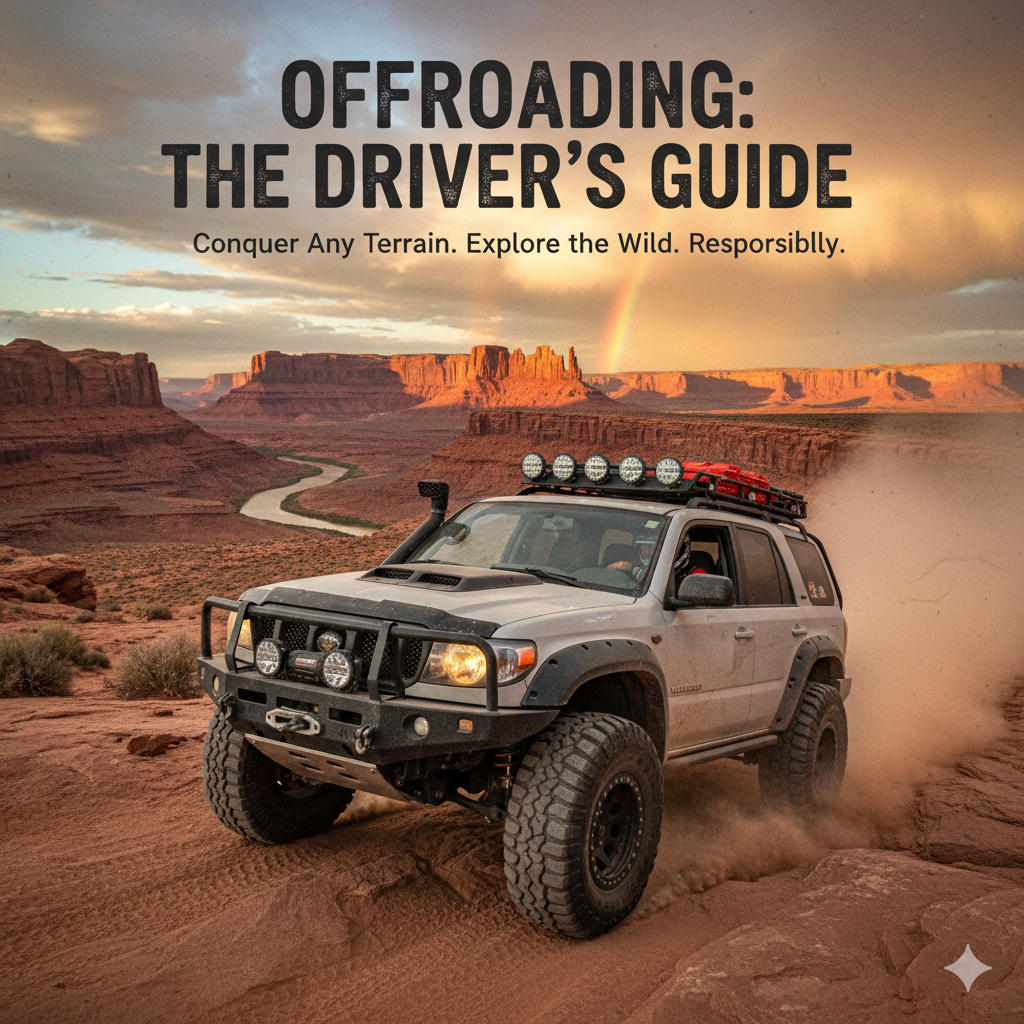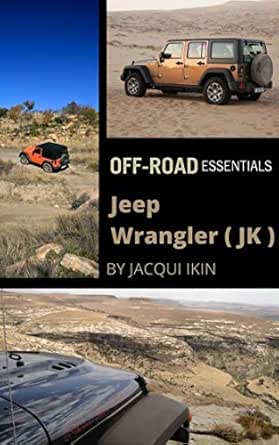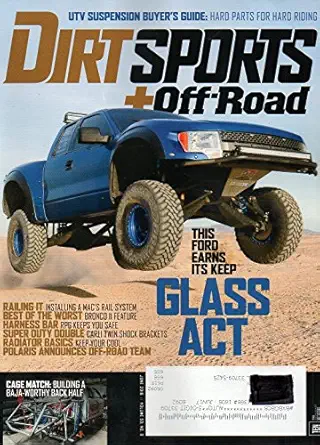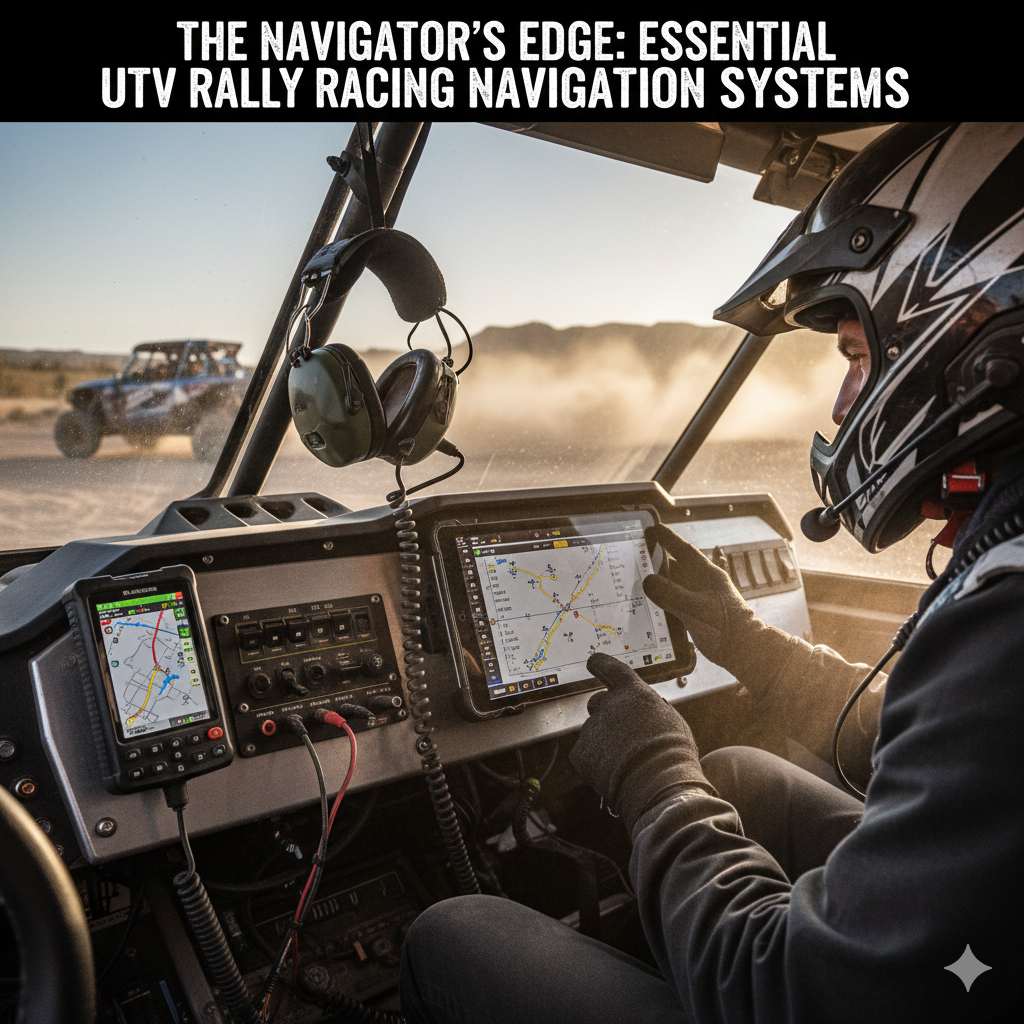There’s an undeniable allure to leaving the paved road behind and venturing into the wild.
Off-roading is more than just a hobby; it’s an exhilarating experience that connects you with nature, challenges your driving skills, and offers a unique perspective of the world.
But before you dive headfirst into muddy trails or rocky ascents, it’s crucial to understand the fundamentals of safe and responsible off-road driving.
This guide will equip you with the knowledge to transform from a novice into a confident off-road explorer, ready to tackle any terrain with skill and respect for the environment.
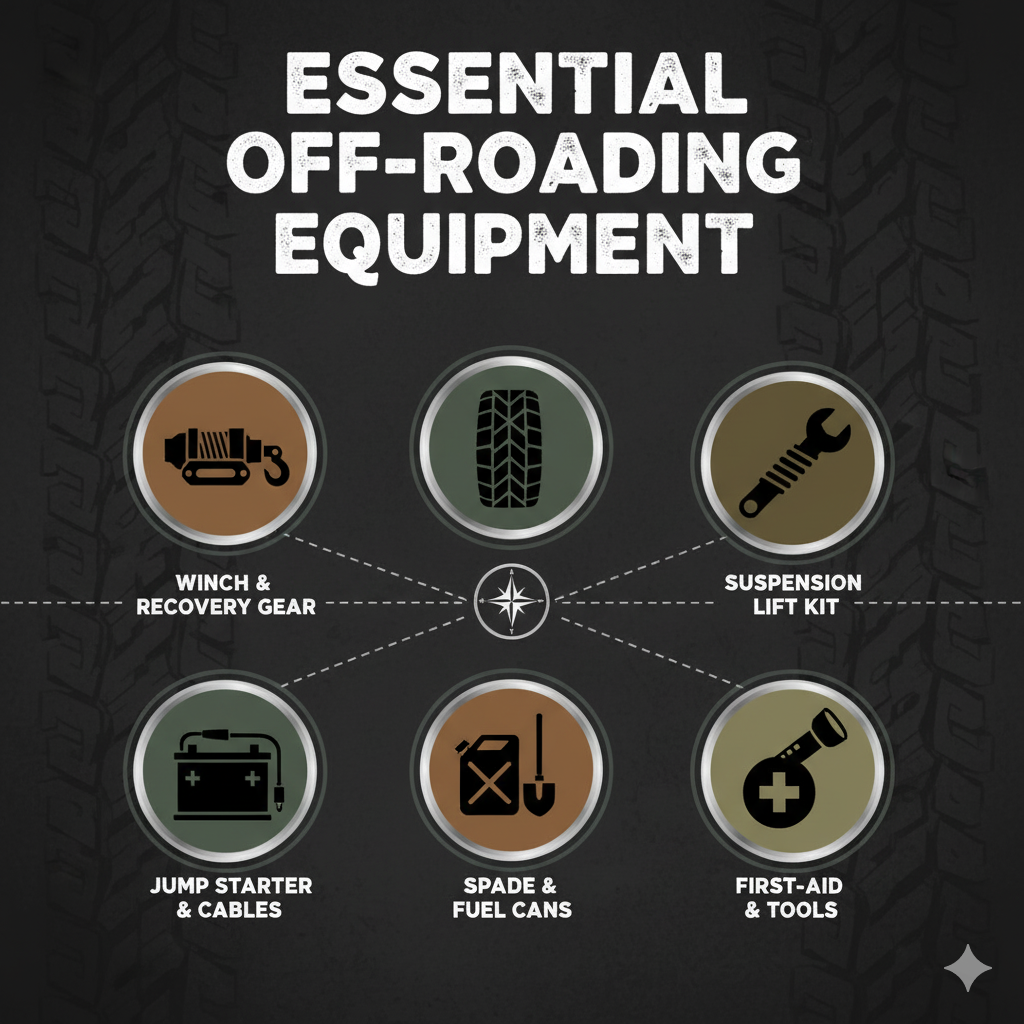
Essential Gear for Every Off-Road Expedition
Successful off-roading begins with proper preparation, and that includes outfitting your vehicle and yourself with the right gear.
Your regular car simply won’t cut it; off-road vehicles are specifically designed to withstand extreme conditions and navigate challenging landscapes.
Beyond the vehicle itself, several key pieces of equipment are non-negotiable for a safe and enjoyable trip.
Tires: Your Connection to the Terrain
Your tires are arguably the most critical component for off-road performance.
Unlike standard road tires, off-roading tires are larger in diameter and feature aggressive tread patterns designed for maximum traction on loose or uneven surfaces.
When selecting tires, consider the wheel diameter, offset, and backspacing.
A good rule of thumb is to choose a wheel diameter that is half the total height of the tire [1].
All-terrain (AT) tires are suitable for occasional fire road trails, while dedicated off-road tires, like mud-terrains (MT), are essential for more challenging conditions [3].
Recovery Gear: When the Unexpected Happens
Even the most experienced off-roaders can get stuck.
Having the right recovery gear is paramount for self-rescue or assisting others.
A basic recovery kit should include shackles and a snatch strap, which can stretch up to 20% to help pull vehicles out of pits and ditches [1].
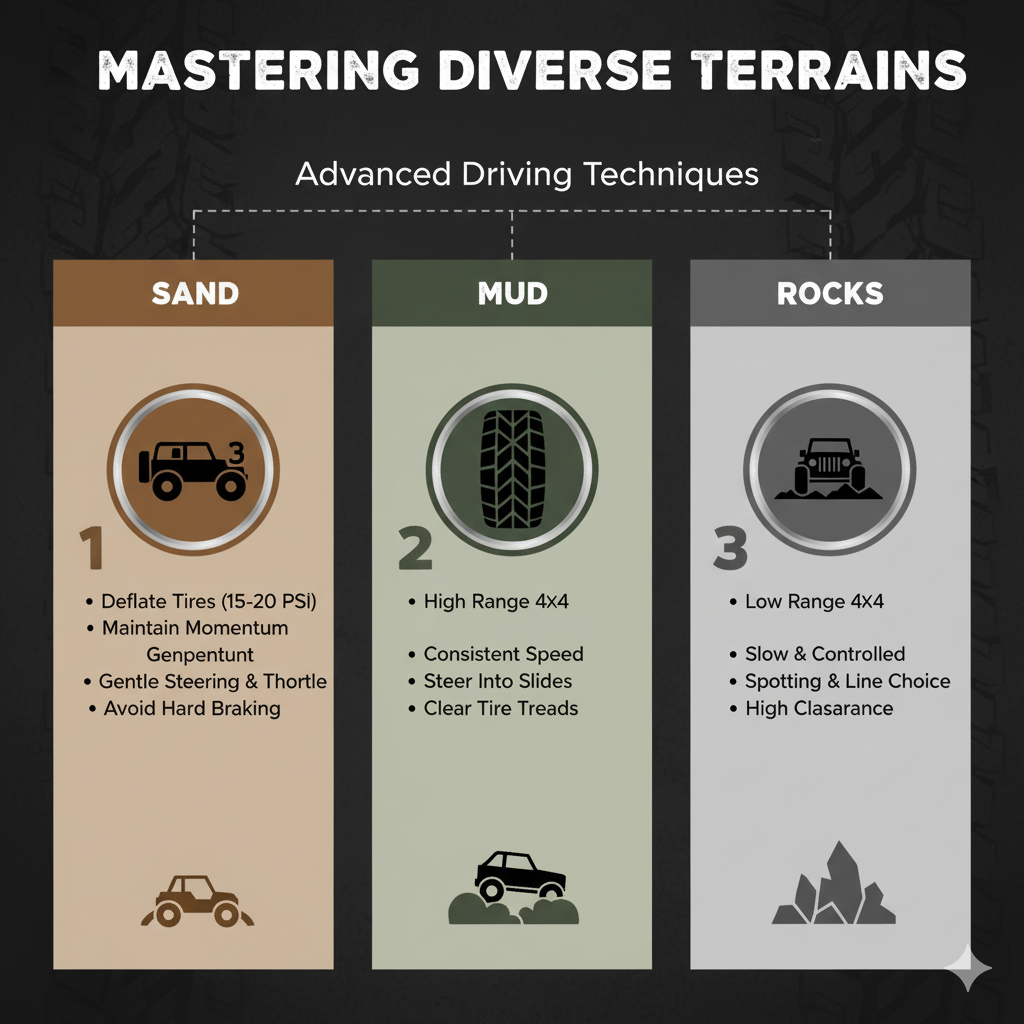
For more serious situations, a winch is invaluable, providing a powerful means to extract a stuck vehicle.
Traction boards, such as Maxtrax, offer a less strenuous way to get unstuck from mud or snow and can even double as a shovel [1].
Lighting: Illuminating Your Path
When driving at night or in low-visibility conditions, adequate lighting is crucial.
Beyond your vehicle’s standard headlights, consider auxiliary lights with different beam patterns like flood, spread, spot, or driving to enhance visibility [1].
An emergency battery-powered light is also essential for repairs or camping.
Emergency and Safety Equipment: Prepared for Anything
A comprehensive emergency kit is vital.
This should include engine and tire repair toolkits, an air compressor to adjust tire pressure, and communication devices like a cell phone or radio transmitter [1].
Always carry personal identification and medical information.
Other critical items include a spare tire and jack, tow strap, tree saver, fire extinguisher, GPS or navigation system, spare flashlights, flares, reflectors, and spare keys [1].
A well-stocked first-aid kit is also indispensable, especially when miles away from medical facilities [1].
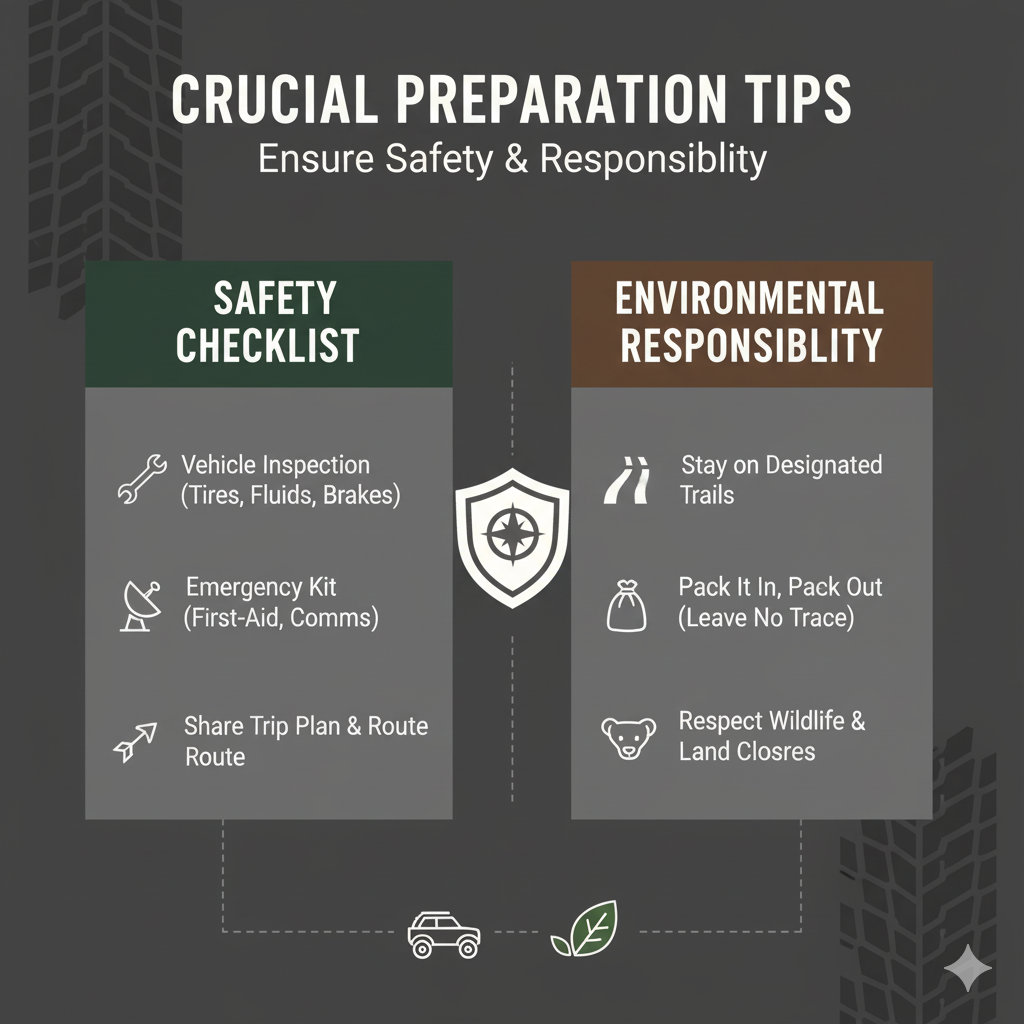
Bumpers and Suspension: Protecting Your Ride
Off-road bumpers are designed to withstand significant impact and protect your vehicle’s vital components, distributing forces more effectively than standard bumpers [1].
A robust suspension system is equally important for navigating jagged rocks and steep hills, absorbing shocks and maintaining wheel contact with the ground [1].
Some vehicles may also benefit from a snorkel, which allows the engine to draw air from a higher point, crucial for water crossings [1].
Mastering Off-Road Driving Techniques
Beyond having the right equipment, mastering specific driving techniques is key to conquering diverse off-road terrains.
The golden rule is to prioritize prudence over speed, approaching obstacles with a deliberate and unhurried pace [2].
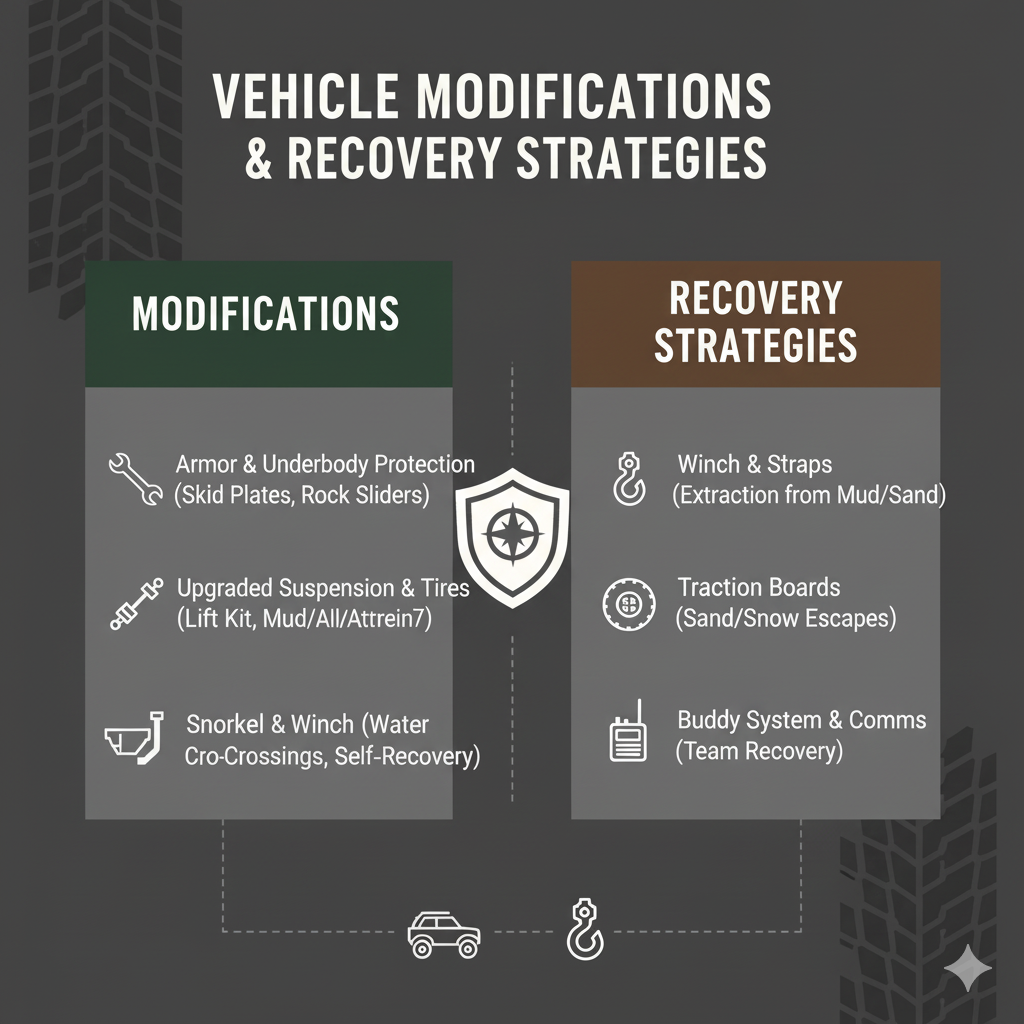
Sand, Snow, and Mud: Traction is Key
When encountering soft surfaces like sand, snow, or mud, traction is paramount.
Deflate your tires slightly to increase their footprint, providing better grip [2]. Maintain steady momentum throughout the obstacle.
In sand and snow, if your wheels begin to spin, ease off the gas to allow the tires to regain traction.
For mud, a controlled amount of wheel spin can help clear mud from the tire treads [2].
Rocks, Logs, and Ditches: Navigate with Precision
Approaching obstacles like rocks, logs, or ditches requires precision.
Angle your vehicle so that only one tire engages the obstacle at a time, keeping the other three on solid ground for maximum traction [2].
To protect the underside of your vehicle, gently drive over obstacles, placing one tire on them rather than straddling them [2].
When faced with rocky tracks or gullies, drive slowly, avoid large rocks, and use high-ratio four-wheel drive for enhanced control [2].
Hills: Ascend and Descend with Care
When tackling hills, approach them straight on to distribute weight evenly and ensure equal traction to all four tires [2].
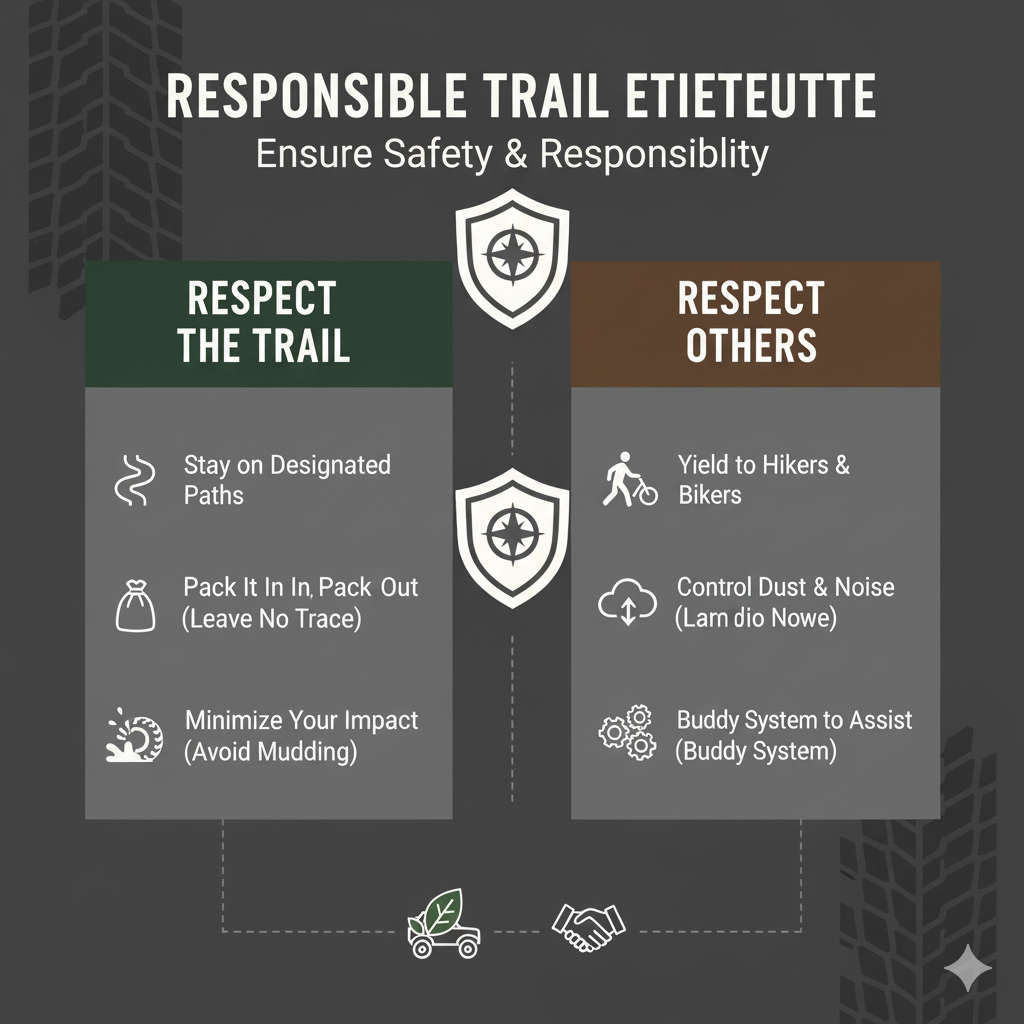
Select a gear that allows the vehicle to handle the incline comfortably; too low a gear can cause wheel spin, while too high a gear will lack power [2].
Always have an escape plan in mind in case of a failed climb [2].
For steep descents, engage low-range 4WD and use engine braking to control your speed, avoiding heavy reliance on your brakes.
Off-Road Preparation and Planning
Preparation extends beyond just gear; it involves understanding your vehicle and planning your route.
Familiarize yourself with your vehicle’s capabilities, including features like traction control and 4WD high/low settings [3].
Before heading out, engage high-range four-wheel drive on rough tracks to minimize stress on the transmission [2].
Strategic gear selection before encountering obstacles is crucial, as botched gear changes can lead to getting stuck [2].
Always walk through tricky sections beforehand to identify vulnerable undercarriage points and plan your approach [2].
Consider joining local off-road clubs or forums to learn from experienced drivers and find guided training runs [3].
Environmental Responsibility: Tread Lightly
As off-road enthusiasts, we have a responsibility to protect the environments we explore.
Environmental conservation is paramount.
Always stick to established tracks and avoid creating new ones [2].
Minimize track damage by repairing holes and removing debris [2].
When winching off trees, use tree savers to prevent bark damage [2].
Remember the principles of Tread Lightly!
and Leave No Trace to ensure these natural spaces remain pristine for future generations [3].
Conclusion: The Journey Awaits
Off-roading is an incredible adventure that offers unparalleled freedom and excitement.
By understanding your vehicle, equipping yourself with the right gear, mastering essential driving techniques, and practicing environmental responsibility, you can confidently navigate the most challenging terrains.
So, prepare your vehicle, plan your route, and embark on your next off-road journey – the wild awaits!
References
[1] Rogue Fabrication. (2020, December 13). *Off-Roading 101 – Driving Tips and Equipment*.
[2] E3 OffRoad Association. *Mastering the Art of Off-Road Exploration: Essential Tips for Every Adventurous Driver*.
[3] DrivingLine. (2013, October 30). *Off-Road Basics: A Beginner’s Guide*. [
[4] BFGoodrich Tires. *Off-Road Driving Tips & Advice*. []

